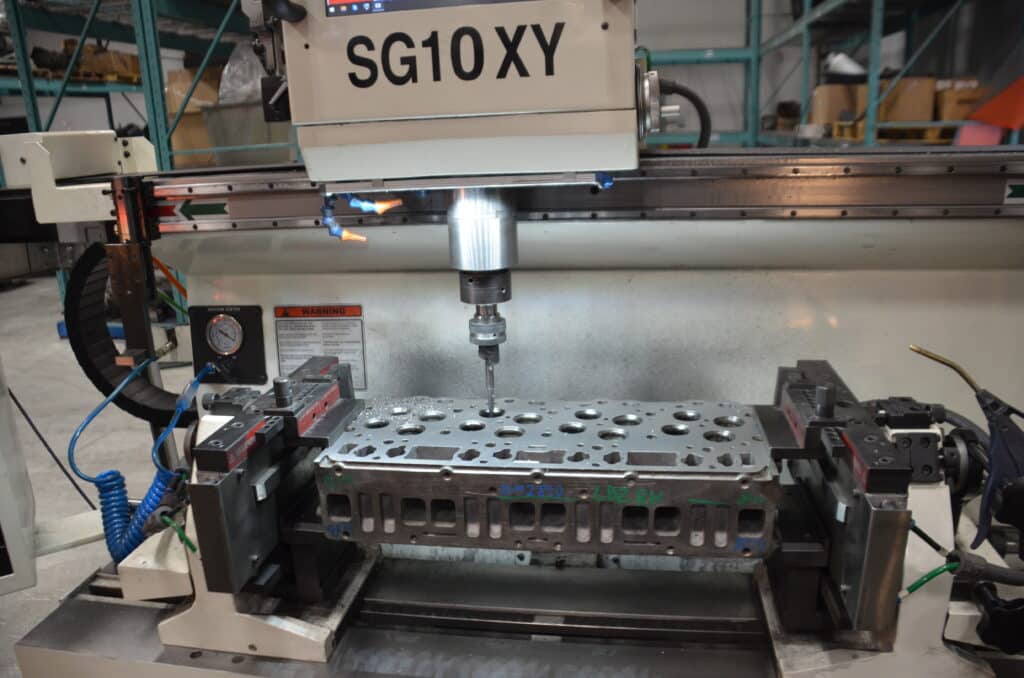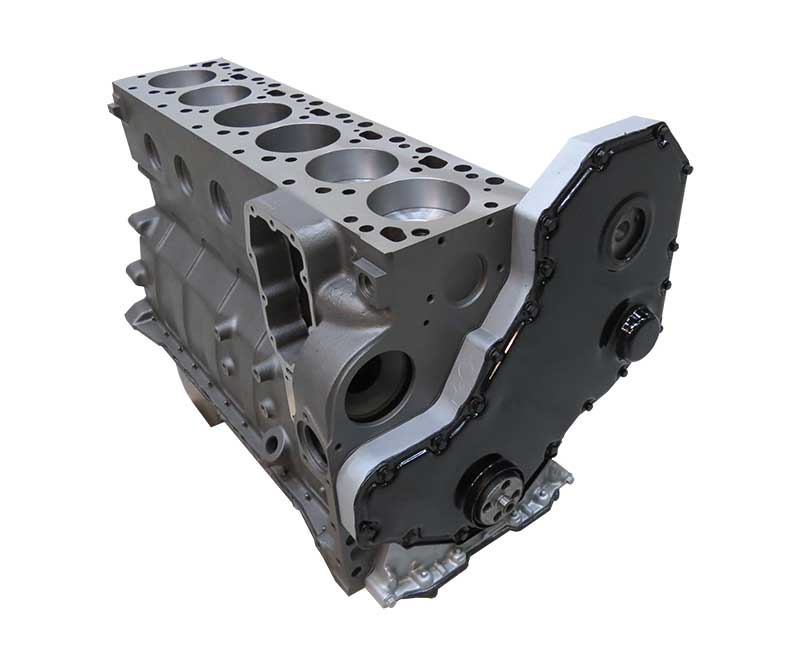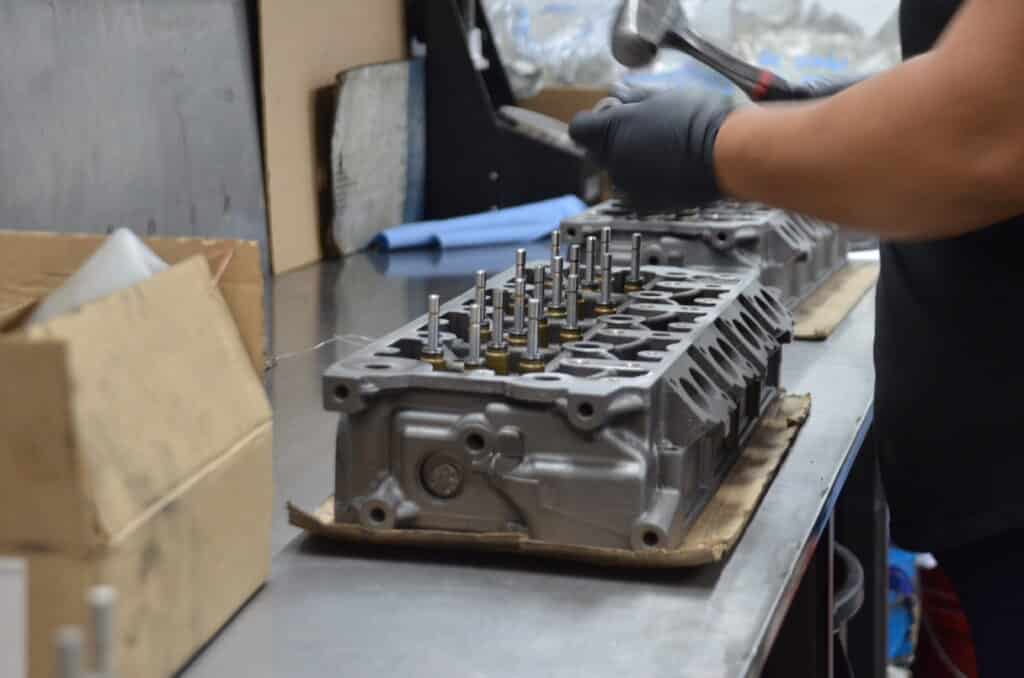With the price of diesel fuel skyrocketing and cold temperatures looming overhead, you may be wondering if you can run kerosene in your diesel engine rather than regular diesel fuel. Kerosene is typically cheaper than diesel, and it burns at a lower temperature than diesel which prevents gelling in freezing temperatures, so it may sound like the perfect replacement for your engine. However, there are many risks to consider before you run kerosene in your diesel. Read our blog to learn more about running kerosene in a diesel engine!
What is Kerosene?
Kerosene is a combustible chemical formula that is derived from petroleum. It’s a hydrocarbon liquid that is used as a fuel for jet engines, furnaces, lamps, and heaters. Kerosene has a flash point of 38℃ (100℉) and it has a freezing point of around -40℃/℉. Kerosene is considered a polluting fuel, so it is not recommended by the World Health Organization (WHO) to be used in household use – this is because kerosene smoke contains particulate matter that can be harmful and lead to higher cancer risk, asthma, tuberculosis, respiratory infections, cataracts, and adverse pregnancy affects.
Kerosene vs Diesel
Kerosene and diesel are both petroleum fuels from the molecular components of crude oil. Kerosene is extracted from crude oil first, then diesel, as kerosene has a lower boiling point than diesel. Diesel is a reddish colour while kerosene is colourless. While typically kerosene is used in a variety of engine systems, diesel is almost exclusively used for vehicles.
Benefits of Running Kerosene in Your Diesel
There are a few benefits that come with using kerosene in diesel engines.
1. Kerosene is Cheaper
The number one benefit of running kerosene in your diesel engine is price point. Kerosene is much less expensive than diesel fuel, so if filling up at the gas station causes you great amounts of pain, kerosene can seem like a fantastic alternative.
2. Kerosene Doesn’t Gel as Easily
Kerosene can run a lot smoother when there are freezing temperatures as it doesn’t gel as quickly as diesel does. This can be viewed as a huge benefit in northern climates like Alberta! However, there are also plenty of additives that can be added to diesel fuel that will stop your diesel fuel from gelling.
Risks of Using Kerosene
While cheaper costs and less risk of gelling can seem like a winning scenario, there are also a lot of risks involved with using kerosene instead of diesel in a diesel engine.
1. Kerosene isn’t Lubricating
Kerosene is a harsher fuel for your diesel engine, and the lack of lubrication within the fuel can damage your diesel’s injector pump unless you add lubricant.
2. Kerosene Isn’t as Efficient
Because kerosene burns at a lower temperature than diesel (the aspect that prevents gelling in freezing temperatures) it is far less fuel efficient and reduces your engine power. If you’re looking for lots of power you’re not going to get it running kerosene through your diesel, plus the wasted fuel may end up costing you more than anticipated.
3. Kerosene Can Cause Damage to Some Diesels
Although some diesel engines have kerosene as an accepted alternative fuel option, not all diesels do. Running kerosene through your diesel can cause many issues with the engine unless kerosene is an approved fuel.
4. Using Kerosene Can Void Warranty
If kerosene isn’t an approved alternative fuel for your specific engine, using kerosene can void the warranty you have on your vehicle’s engine. Check with your warranty provider and the vehicle’s manual before using kerosene.
5. Using Kerosene May Be Prohibited
In Canada and the United States, using fuel on public roads that hasn’t been properly vetted and taxed is prohibited. If you are using kerosene in your vehicle that was not meant for road use, you could be liable for a fine. There are certain ash and pollutant standards fuel for road vehicles need to follow, so ensure that you are acting within the law.
In short, kerosene does work in diesel engines, but the risks to your diesel as well as the potential liabilities tend to far outweigh the cost savings. If you’re looking to reduce gelling in your diesel during the winter months, it is often not recommended to use kerosene.
Although you may have heard suggestions of mixing small amounts of kerosene (or even 50/50) into your diesel when it’s cold out, it’s not recommended by professionals in the diesel industry. It’s far better for your engine to use additives, lubricants, and winter-safe diesel engine oil rather than arbitrarily mixing kerosene. Whatever cost savings you may get from using kerosene in your diesel will be overshadowed by the potential large bill to fix any damage it may cause.
For more questions you may have about your diesel remanufactured engine, please contact us!






